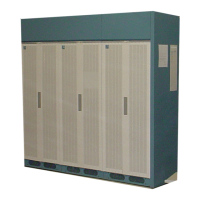5. If the transport layer is UDP, the first provisional response is
likely to be a ″100 TRYING″ message unless the TPS is a 5ESS
®
switch and the transport layer is SCTP. The ″100 TRYING″
message indicates that the far end has received the INVITE, so
that retransmissions can be halted, but provides no other
information for call setup. The OPS continues to wait for a
response containing the necessary session description and other
signaling information.
6. Depending on the nature of the call, the next response received
(or the first response, when the transport layer is SCTP), is likely
to be a provisional response such as ″180 RINGING″ or ″183
SESSION PROGRESS″, which contains the bearer session
description of the far end, as well as other call signaling
information, possibly including encapsulated ISUP, if
encapsulated ISUP was included in the original INVITE.
7. There may, or may not, be additional SIP messages exchanged
between the OPS and TPS before the call is answered, depending
on the nature of the call and the provisioned options for SIP
methods and procedures allowed and/or supported at each end,
which are communicated and agreed upon between the OPS and
TPS, by means of parameters in SIP headers in the INVITE/18X
SIP message exchange. The options that might lead to additional
messages being exchanged before the call is answered include
support for SIP preconditions procedures (allowed only when the
transport layer is SCTP), and support for reliable provisional
responses (PRACK).
8. When the call has been answered, the OPS receives a 200 OK
INVITE final response.
9. The OPS acknowledges the 200 OK INVITE with a SIP ACK
message. Whether the transport layer is UDP or SCTP, the SIP
protocol requires the 200 OK INVITE final response to be
retransmitted by the TPS until the ACK is received, so the OPS
must respond to any retransmissions of the 200 OK INVITE with
retransmissions of the ACK message.
10. After the 200 OK INVITE is received and the ACK is sent, the
call proceeds to the ″talking″ state, and call setup is complete.
At this point the bearer path for the call is available to carry call data
(e.g., PCM voice) between the calling and called party. The path
remains available until either party terminates the call.
High-Level Call Flow
Call Flow
....................................................................................................................................................................................................................................
3-10
Lucent Technologies 235-200-118
Issue 3.02B, March 2007

